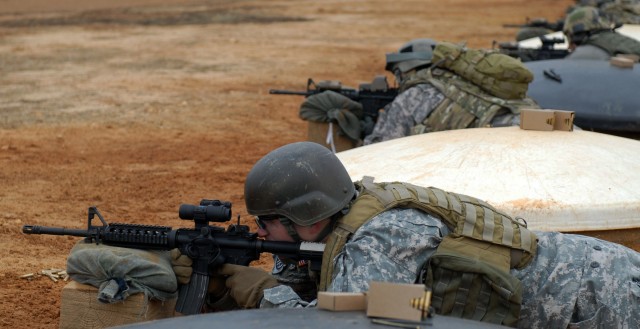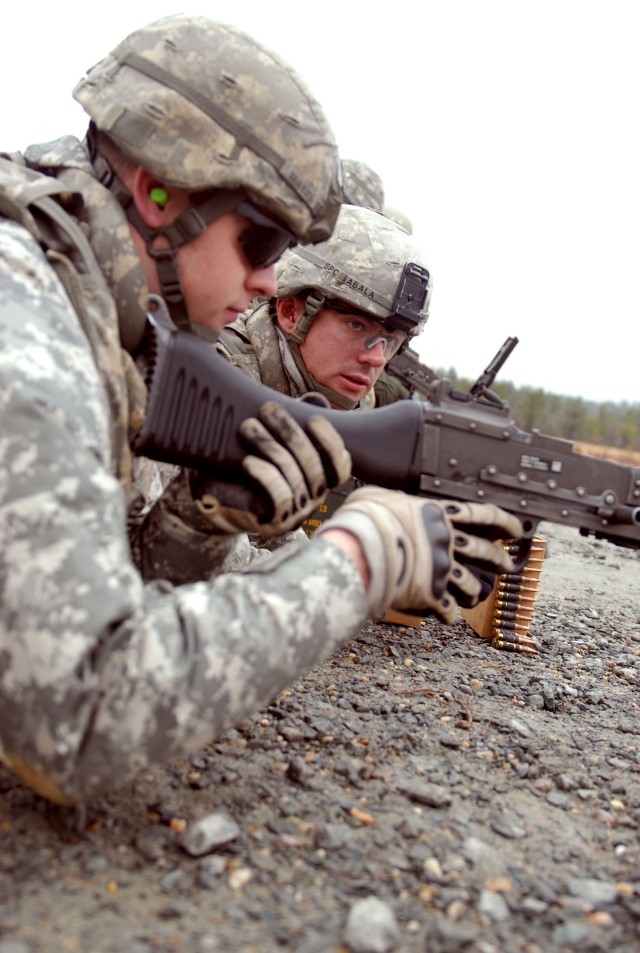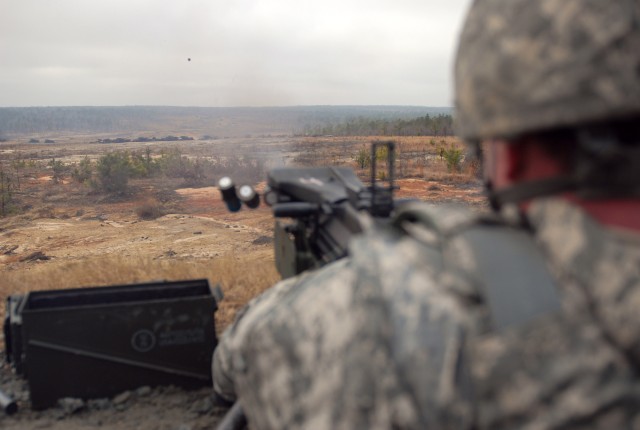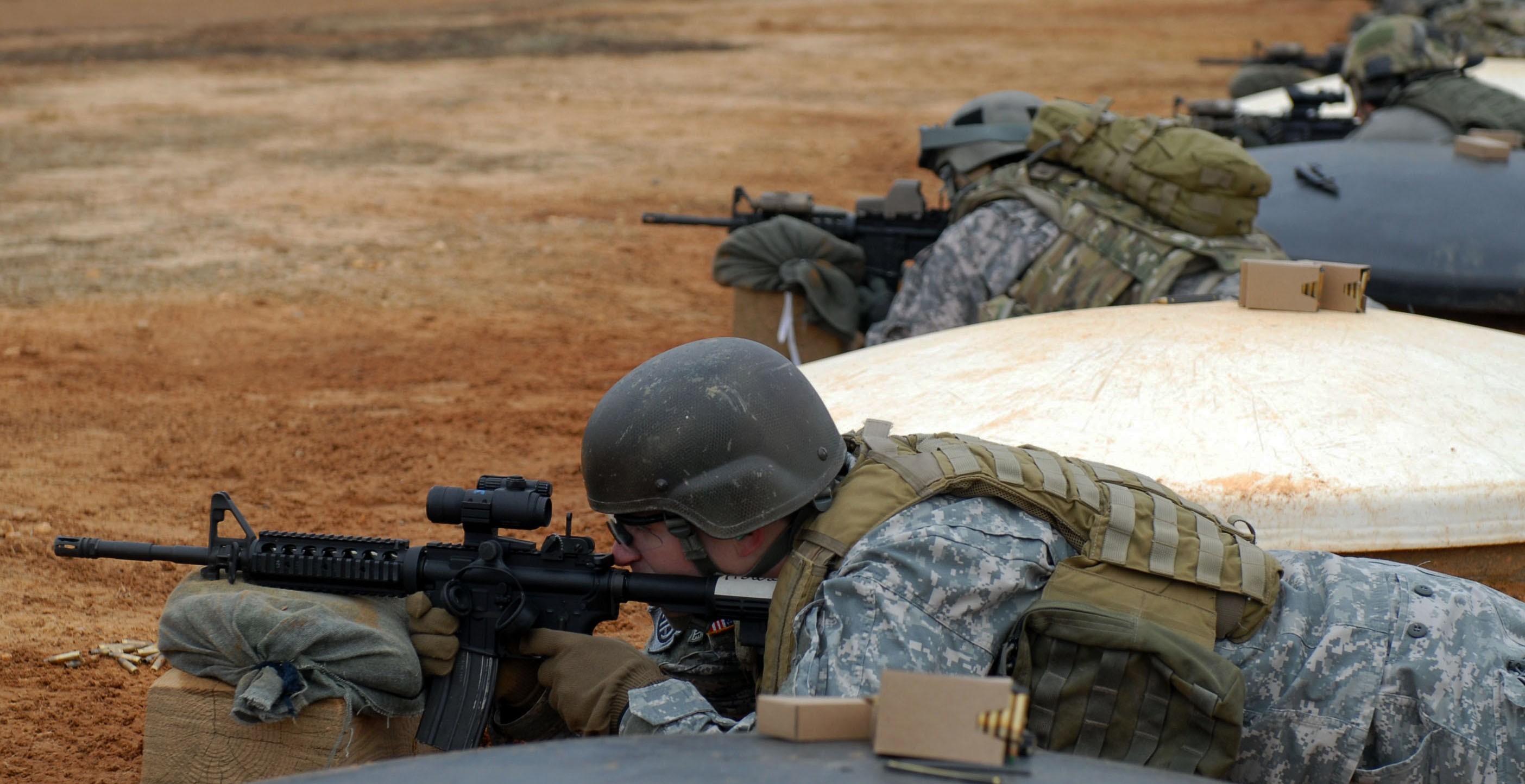FORT BRAGG, N.C. - Cold weather and melting ice were no match for the students attending the Special Forces Basic Combat Course - Support course designed to help prepare them for being deployed in support of special operations forces.
Over the course of two weeks, servicemembers would rise before dawn to eat a quick breakfast and then, bundled up in multiple layers of clothing and gloves, make their way to a range where they were taught basic and advanced fundamentals of marksmanship. In addition, servicemembers attended classroom instructions to learn about foreign cultures and how to take care of their own wounded warriors on the battlefield.
Soldiers and Airmen of various units arrived at Fort Bragg, N.C., to participate in training conducted by the 3rd Special Forces Group in preparation for their deployment to Afghanistan.
"It's obviously very important for us to get out here, not only to meet some of the units we'll be supporting but to also get the best training we can get before we go down-range," said Maj. Ted Hanger, commander, 195th Special Operations Forward Support Company, Nebraska National Guard.
The instructors began the two-week training course by having the Soldiers and Airmen adjust the sights on their assigned rifles at a range. Some of the participants had previous experience with optic sights, while others had never used one before.
The rifle range was followed by a day of hands-on instruction of crew served weapons, to include the M2 caliber, .50 machine gun, Mk-19 grenade launcher, the M249 squad automatic weapon and M240G machine gun. While some had experience with the larger caliber weapons, most had never handled one or seen one in person.
"It's been a long time since I've handled some of the weapons we used here today," said Army Staff Sgt. Jarod Perkioniemi, detachment sergeant, 19th Public Affairs Detachment. "It's good training to get hands on weapons that we'll see down range, yet don't have direct access to all the time while in garrison."
Once participants were familiarized with the M4, M16 and crew-served weapons, the course was led back to the rifle range for instruction on shooting in different stances during advanced marksmanship drills. The training is designed to simulate realistic terrain and obstacles in a combat zone. Although most training is conducted using dominant firing hands, some firing positions required shooters to change to their non-dominant side, resulting in strange and unfamiliar stances and sight pictures.
"The only time we shoot our M16 is from the prone position or kneeling position," said Senior Airman Kristine Rodriguez. "We've never gone through this kind of training before."
The training included classroom instruction on cultural awareness and use of the improved first aid kit (IFAK). Students were briefed on different cultures and ethnic groups within Afghanistan, the various regions of the country and the terrain that is to be expected.
"A lot of students are uneasy about giving and receiving the tube up their nose," said Spc. Kaylan Alapati, a medic with the 3rd Special Forces Group. "As with anything, after much practice, it will get easier. However, I'll admit that it never gets easier to receive them."
Combating cold weather, paper targets, nasopharyngeal airways and even a delayed start to the training, the participants received pertinent and realistic instruction that they will be able to share with others and take with them on their deployment.












Social Sharing